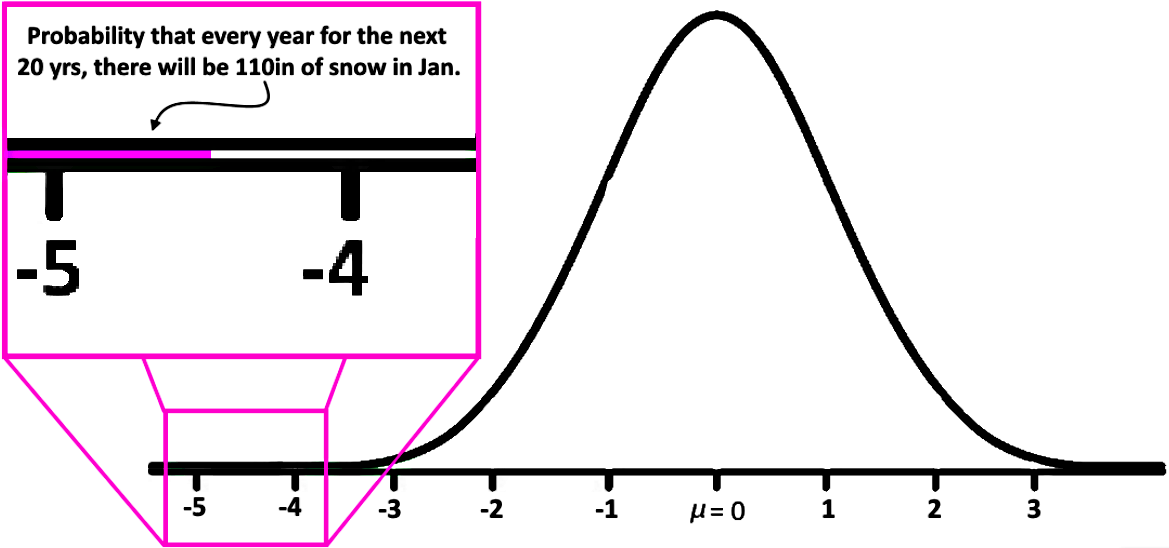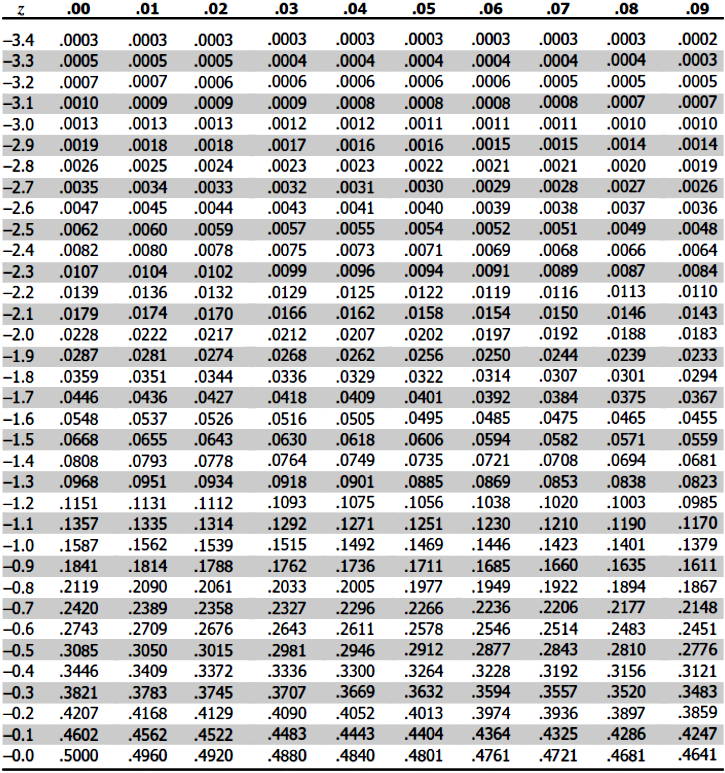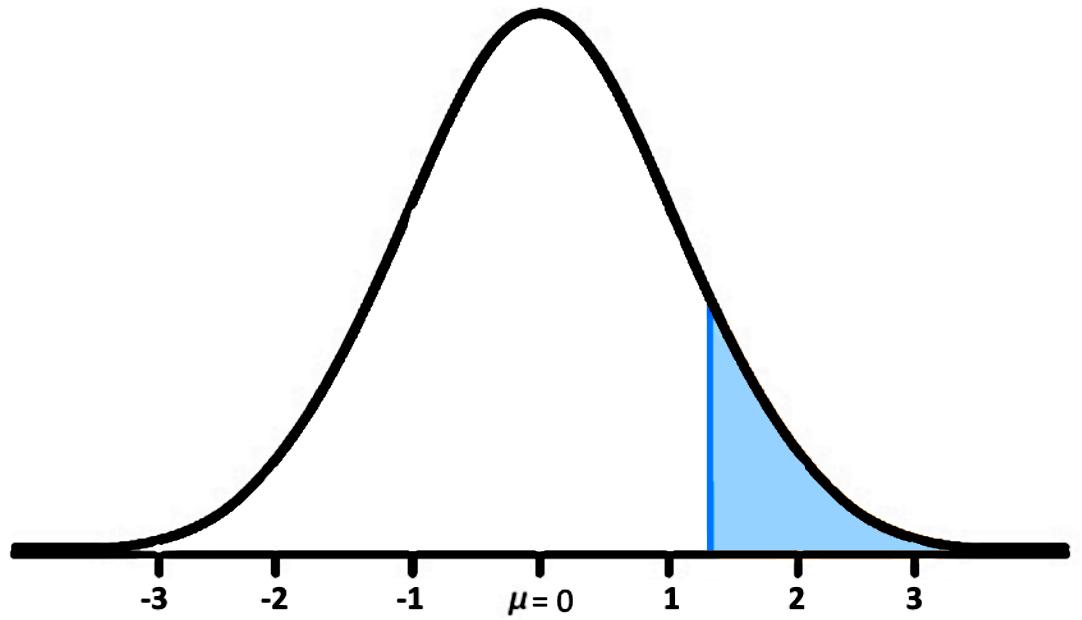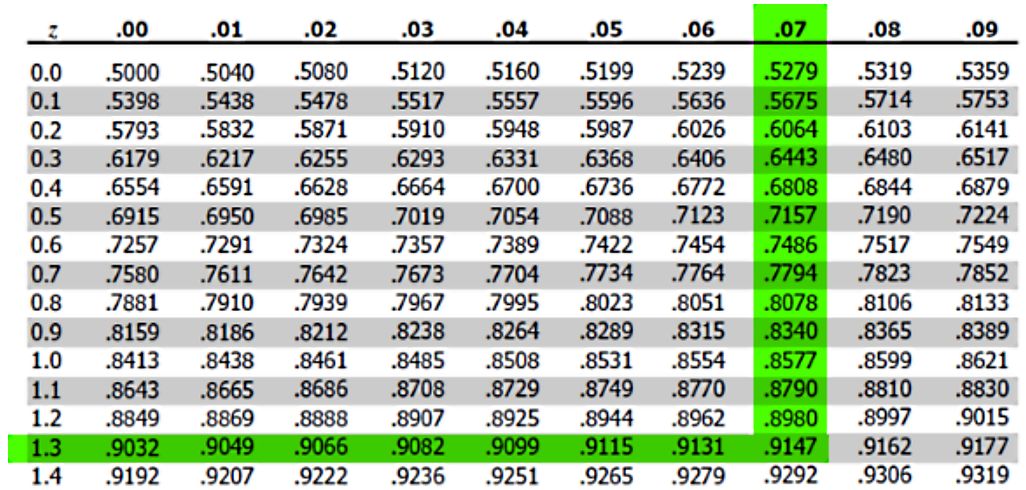Rare event rule
An event is deemed rare when its occurrence is infrequent or even hypothetical (so, it is theorized it can or may happen, but it hasnt yet). In statistics, we have this statement called the rare event rule with allows us to deal with such events and the claims that can be done suing them.
Because of that, this lesson will focus on explaining the concept and usage of the rare event rule for inferential statistics.
What is the rare event rule?
The rare event rule in statistics is defined as follows:
With a certain claim, if the probability of the claim coming true is extremely unlikely we can conclude with a reasonable amount of certainty that the claim is false.
In simple words, the rare event rule deems the assumption of an event incorrect when the probability of such event is minimal.
Example problems
In order to understand better about rare event rule statistics, let us work on a pair of problem examples so you can observe different cases in which this concept is useful.
Example 1
The Rare Event Rule for the Central Limit Theorem
The ski resort Whistler/Blackcomb gets an average of 120 inches of snow in January with a standard deviation of 10 inches. If someone makes the claim that every year for next twenty years it will snow less than 110 inches of snow in January, then can we say whether this claim is plausibly true or most likely false?
To start with, we assume the claim as truth and analyze the possibilities of it happening or not, and so, there are two options:
- On average, it will snow LESS than 110 inches of snow every January for the next 20 yrs.
- On average, it will snow MORE than 110 inches of snow every January for the next 20 yrs.
In order to calculate the probability that every year for the next twenty years it will snow less than 110 inches of snow in January, we use the central limit theorem. For that, we define that this probability we are looking for is , which reads as "The probability that the sample mean is less than 110".
Therefore, we have that: and the sample size for this case is (Since we are checking for the probability over a range of 20 years).
Remember that in order to calculate a probability using the central limit theorem, we have to use the central limit theorem formula for z-scores, which is:
Thus, the probability we are looking for can be defined as:
Notice that this probability is further than 4 standard deviations from the mean to the left hand side, so, in a standard normal distribution, looks like:

As you can see, this probability is REALLY low, let us try and identify it in the z-table below:

Notice the lowest z-score in the table happens to be -3.4, therefore, -4.47 is SO small, that it is not even worth to put in the z-table to work with it, this can confirm to us that the probability of the sample mean being lower than 110 is incredibly small that it can pretty much be taken as zero!
Therefore, we have that:
And so, using the rare event rule definition we can clearly see that the claim stating that every year for next twenty years it will snow less than 110 inches of snow in January is incorrect, since everything tells us that on average, it will surely snow more than 110 inches of snow in January every year for the next 20 yrs.
From the two options we had at the beginning of this problem, the first one can be taken as false (which contains the rare event), and the second one can be taken as the truth.
Example 2
In Pacific Spirit Park there are an average of 175 cedars per acre, and a standard deviation of 20 cedars per acre. A plot of land of size 30 acres is marked out and it is assumed that there will be more than 5,400 cedars in this plot. Is this claim plausibly true or most likely false?
In this case, the claim is:
There will be more than 5,400 cedars in a sample plot of land the size of 30 acres.
We assume the claim as truth and analyse the possibilities of it happening or not, and so, there are two options:
- On average, it will snow LESS than 110 inches of snow every January for the next 20 yrs.
- On average, it will snow MORE than 110 inches of snow every January for the next 20 yrs.
Since we have a sample, that means that we can use the central limit theorem to calculate the probability of our claim to be true or not.
Before we jump into the probability calculation, we need to denote that in this sample plot of land we have 30 acres, so how many cedars would it correspond to each of these acres? 180. Why? Because we say that there should be at least 5,400 cedars in 30 acres, thus, we divide:
5,400 / 30 = 180 and we obtain that there are at least 180 cedars in each acre of the sample. Therefore, the probability we are looking for is that of having more than 180 cedar per acre of land in average, or mathematically: .
Given that we have the following information: and the sample size of , the probability we are looking for can be computed as:
Plotted in the standard normal distribution, looks like:

Using the z-table of positive zs in order to obtain the probability of z being less than 1.37:

We obtain that P(z < 1.37) = 0.9147.
Since P(z > 1.37) = 1 - P(z < 1.37) = 1 - 0.9147 = 0.0853.
Therefore, the probability that a sample plot of 30 acres of land has more than 5,400 cedars is equal to 0.0853 or 8.53% chances.
A probability of 8.53% is low but is not enough for the event to be called a rare event. Remember, a rare event is that which has a probability of happening that is so low that it is basically negligible or taken as zero, usually, we will think of such probabilities that are lower than ____ to be that negligible. But this case doesnt fit with the description, therefore, this is not a rare event, and the initial claim cannot be taken as false.
This means that when observing a plot of land of 30 acres in Pacific Spirit Regional Park there is the possibility of both options enumerated above to happen (for the plot to have more than 5,400 cedars, or for the plot to have less than 5,400 cedars), is just that one is much more likely than the other (for this case the most likely option is the second one, for the plot to have less than 5,400 cedars).
This is the end of our lesson for today. Before we go, we would like to suggest you to take a look at this handout on the basics of hypothesis testing, which introduces the rare event rule to continue with a topic that we will talk about later in a complete chapter of our statistics course: hypothesis testing; so, we think this could serve you while you work on your independent studies since it complements not only this lesson, but some other ones to come too.
This chapter is done, see you on the next one!
Rare Event Rule:
With a certain claim, if the probability of the claim coming true is extremely unlikely we can conclude with a reasonable amount of certainty that the claim is false.
With a certain claim, if the probability of the claim coming true is extremely unlikely we can conclude with a reasonable amount of certainty that the claim is false.






